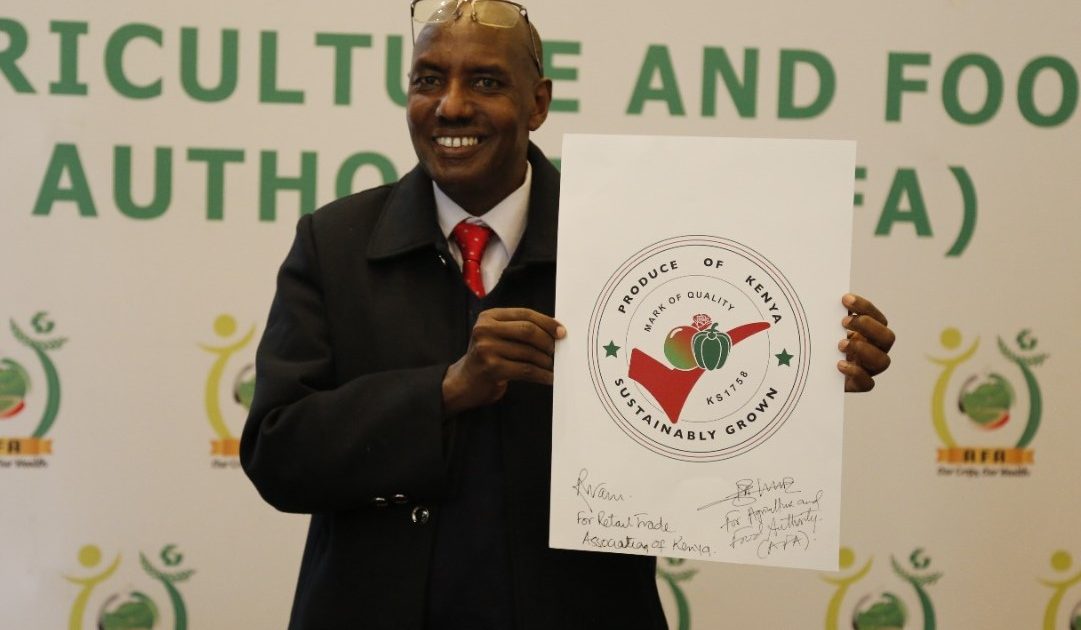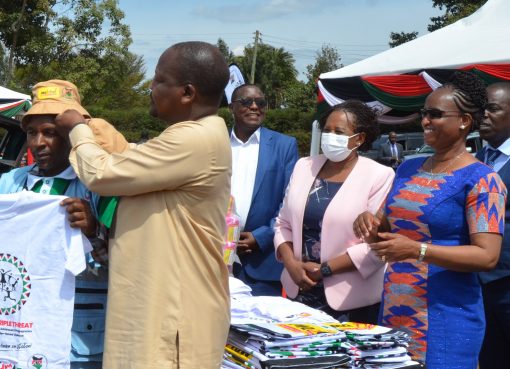The government is exploring for new markets for horticulture produce in non-traditional regions such as Russia, Asia, Central and South Africa.
This follows emerging challenges the subsector was grappling with, after export outlets under the European Union (EU) turned unreliable since member states issued strict measures to tame low quality and pest infested food.
EU is the largest consumer of Kenyan horticultural exports accounting for about 45 percent of the country’s exports.
Agriculture Food Directorate (AFA) Director General Kello Harsama said that the EU market have imposed stringent regulatory requirements that has resulted to increased notifications due to Maximum Residue Limits (MRLs) and interceptions due to quarantine pests.
He announced the shift in focus at a media briefing in Nairobi on the performance of the horticulture industry and the regulatory changes that have been initiated in the sub sector
Harsama explained that Kenya’s tropical nature of climate was favourable for pest infestation therefore pest control was mandatory to ensure that produce were infection free and of quality.
However, he noted that due to the EU regulations, the number of authorized pesticides was shrinking against high incidences of pest and resistance to available pesticide regime.
“We are also diversifying our product range mainly vegetables, cabbages, carrots, onions passion fruits to the regional markets like Uganda, South Sudan, Democratic Republic of Congo, Tanzania in order to mitigate some of the challenges the country is experiencing.
Harsama was optimistic that there was a huge potential to explore other untapped market outlets outside the regions only when farmers were trained on better ways of using pesticide correctly.
He attributed challenges experienced by small holder farmers which have led to low productivity to low adoption of improved technologies, noncompliance to quality and safety standards especially in the domestic market and low adoption of Good Agricultural Practices.
The DG however noted that despite all this, Kenya, through the Ministry of Trade, signed bilateral agreements with the United Kingdom in January 2021 for enhancing exports of Kenyan horticultural products.
Horticultural Crops Directorate (HCD) Director Benjamin Tito confirmed that the industry performance in terms of volumes was exemplary but value dropped.
Volume of fruits, vegetable and flowers between January and June, 2020 stood at 160,931,659 kilogrammes but increased to 191,210,134 kgs 2021.
In terms of value, he noted it had come down from Sh83.5 billion in 2020 to Sh77.2 billion during the same period this year.
“The Volume increased by 30,278,475 Kg mainly from fruits and vegetables and the Value dropped by Ksh 6,325,293,178 attributed by low prices offered in the international market”, he explained.
Interceptions, he added also contributed to low trading over half year period while last year the international market prices were also high due to COVID 19 disruptions on air freight.
Tito said that Quarantine pests especially Thaumatotibia Leucotreta (False Codling Moth – FCM being detected in exported consignments was one of the major reasons leading to produce interception and notification of non-compliance by EU market.
“FCM interceptions in 2018 were 38 from 90,785 consignments, 39 in 2019 from 81,455 consignments, in 2020, 34 interceptions from 88,241 consignments and 27 interceptions in 2021. June alone had 8 interceptions”, he explained.
Other challenges include the shipping of immature fruits as well as MRL, for example, Avocados which might be blacklisted in the international export market if they are exported immature.
“We will be no longer doing random tests in shipments living the country at the airport but in the farms where we can advise the farmers accordingly,” he said.
Tito said other measures to ensure compliance to import requirements will further be enhanced such as risk profiling at the farm level, follow-up and undertaking correction action for noncompliance.
And training of inspectors and exporters and also considering fumigation with phosphine gas as well as water heat treatment for mangoes.
Horticulture sub-sector which comprises vegetables, flowers and fruits among other aromatic plants employs over 6.5 million Kenyans directly and indirectly.
The total area under horticulture is estimated at 496,062 Ha with production of 7.9 million Metric Tonnes. The value of domestic horticulture was estimated at Ksh. 68.5 billion in 2019.
The total value of fresh horticultural exports in 2020 was Ksh. 150.2 billion from 313,668 MT of produce compared to Ksh.143 billion in 2019 from 328,335 MT.
Flowers accounted for Ksh. 107.5 billion (72 percent) from 62,575 MT while vegetables and fruits accounted for KSH. 24.2 (16 percent) and Ksh.18.8 (12 percent) Billion respectively from 105,060 MT.
By Wangari Ndirangu




